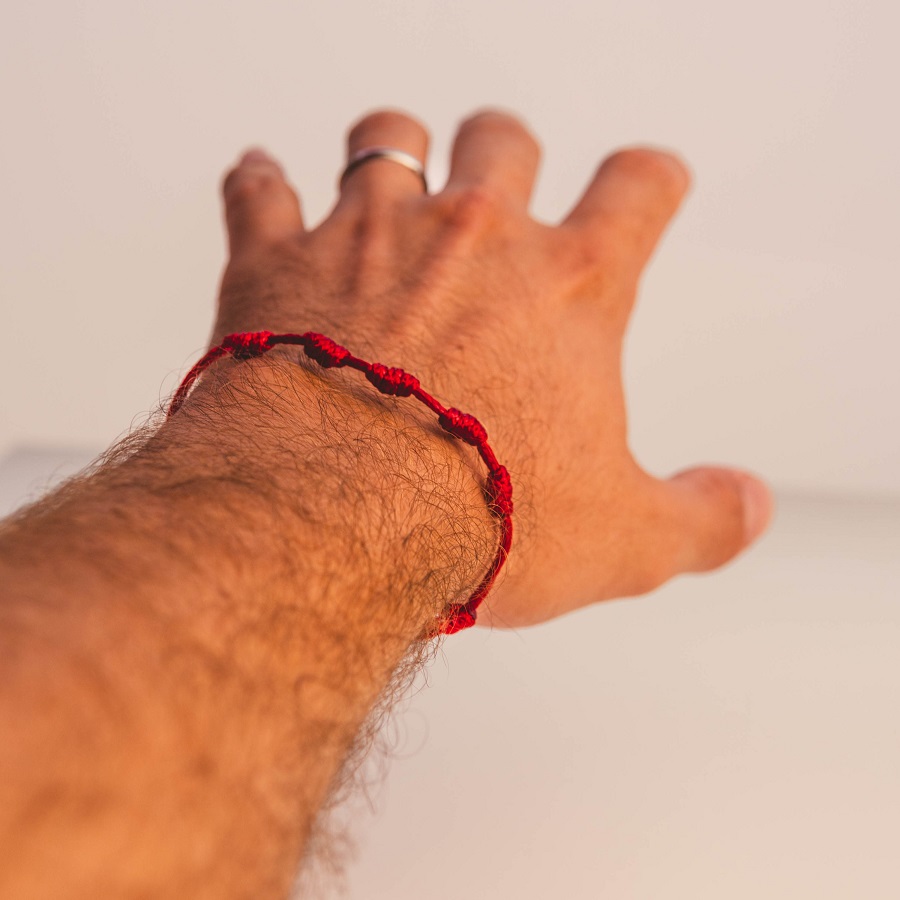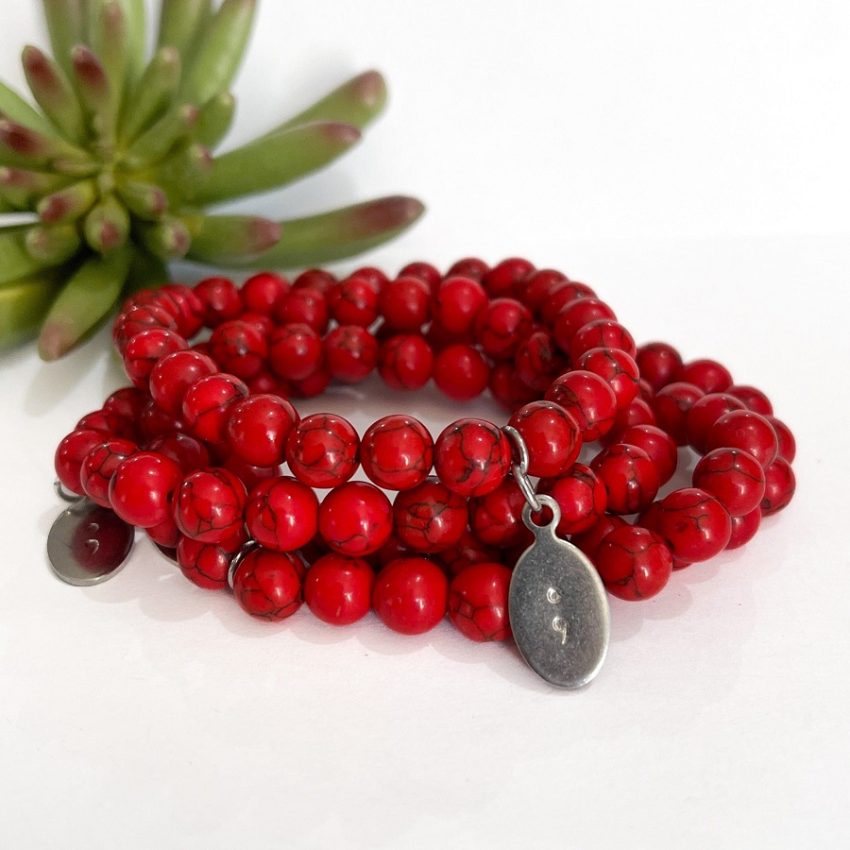Introduction
Red bracelets carry with them a wealth of meanings and symbolize various concepts across different cultures, spiritual beliefs, and contemporary practices. This vibrant color and the simple design of a bracelet combine to convey powerful messages about protection, love, heritage, and deeper spiritual connections. Let’s explore the multifaceted significance of red bracelets—a journey that traverses cultural boundaries and connects us to age-old traditions, modern beliefs, and personal meanings.
Historical Context and Cultural Significance
The red bracelet has a rich history, with its significance varying widely among different cultures:
- Asian Cultures:
- Chinese Tradition: In Chinese culture, red is a color associated with luck, happiness, and prosperity. Red bracelets are often worn to bring good fortune and ward off evil spirits. For instance, during special occasions like Chinese New Year, families may exchange red bracelets made from silk or string. In some cases, they are adorned with auspicious symbols, such as the dragon and phoenix, to enhance their protective qualities.
- Hinduism: In Hindu culture, the red thread or “mouli” is tied around the wrist during rituals and ceremonies, symbolizing blessings, protection, and the bond between the devotee and the divine. This sacred thread is believed to protect the individual from negative energies and bring peace and harmony into their lives.
- Middle Eastern Interpretations:
- In various Middle Eastern traditions, particularly in regions like Lebanon and Turkey, a red bracelet, often known as the “nazar” or “evil eye,” is worn as a talisman. Its purpose is to deflect malevolent influences and envy, serving as a physical reminder that negative energies should not penetrate one’s aura and well-being.
- Western Cultures:
- In many Western contexts, red bracelets have emerged as symbols of solidarity and awareness for various causes. For example, the red bracelet became symbolic of the fight against HIV/AIDS during the 1990s. By wearing the bracelet, individuals expressed support for those affected and demonstrated their commitment to raising awareness about the disease.
Spiritual Connections
Red bracelets also hold significant spiritual connotations, particularly in the context of protection:
- Chakra Alignment: In spiritual practices such as yoga, red is associated with the root chakra (Muladhara), which represents grounding, survival, and stability. Wearing a red bracelet is thought to help balance and energize this chakra, promoting a sense of security and emotional resilience.
- Energy and Vitality: In many spiritual practices, red is seen as a color that embodies life force and vitality. Wearing it is believed to empower the wearer, fostering enthusiasm, courage, and determination.
Personal Meaning and Expression
In modern contexts, red bracelets have also become personal symbols of identity, community, and personal growth:
- Fashion Statement: The aesthetic appeal of red bracelets has led to their status as a fashionable accessory. They can range from delicate silk threads to bold, chunky designs, allowing individuals to express their unique style while carrying symbolic meaning. In this way, wearers may choose red to symbolize personal milestones, achievements, or transformative life experiences.
- Friendship and Love: The red bracelet has become a popular gift among friends and loved ones. It symbolizes love and connection, serving as a tangible reminder of relationships that matter. This can be especially poignant when exchanged during significant moments, such as birthdays, anniversaries, or other life events.
- Healing and Support: Some individuals wear red bracelets as a part of their healing journey, whether physical or emotional. These pieces can symbolize commitment to self-care, resilience in overcoming challenges, or honor the memory of loved ones lost. When shared between friends or loved ones, they often represent mutual support and understanding during difficult times.

Historical Significance of Red Bracelets
Historically, the color red has been associated with life, passion, and protection. Many ancient cultures revered the color red for its perceived ability to ward off evil spirits and bring good fortune. The hue of red is often linked to the life force, with its vibrant nature embodying vitality and strength. Consequently, red bracelets have been woven into the fabric of various rituals and beliefs, serving both as protective talismans and as decorative items.
Red Bracelets in Hinduism
In Hindu culture, the red thread, known as ‘Kalava’ or ‘Mouli’, holds significant religious importance. It is often tied around the wrist during various ceremonies, including weddings, as a symbol of good luck and protection. The red thread is considered a sacred bond that invokes the blessings of deities. It’s commonly tied around the wrists of male family members at weddings and festive occasions to signify unity and familial bonds. Moreover, the red thread is often worn as an amulet, believed to protect the wearer from negative energies.
One of the most notable customs involving red threads is during the festival of Raksha Bandhan, where sisters tie a red thread on their brothers’ wrists, signifying their love, protection, and commitment to care for each other. In this context, the red bracelet acts as a promise, reinforcing familial ties.
Jewish Traditions: The Red String of Kabbalah
The Kabbalistic tradition of Judaism introduces another layer to the significance of red bracelets. The red string is believed to offer protection against the evil eye, a malevolent force believed to cause harm or misfortune. Worn on the left wrist, the red string is often made of wool and is associated with the biblical figure Rachel, who is seen as a protector of Jewish identity and spirituality.
The wrapping of the red string around the wrist is accompanied by prayers and intentions, establishing a powerful connection to the divine. This practice has gained international popularity, particularly among celebrities and influencers, who often sport the red string as a symbol of spiritual protection.
Red Bracelets in Asian Cultures
In many Asian cultures, especially in China and Thailand, red is associated with luck and prosperity. Red bracelets are often given during celebrations such as the Lunar New Year, symbolizing good fortune for the coming year. In Chinese weddings, red bracelets are gifted to the bride, signifying fertility, happiness, and the blessings of the family.
In Thailand, monks often bless red threads and bracelets, offering them to followers as symbols of good luck and protection. The act of wearing a blessed red bracelet is seen as a way to invite auspicious energy and spiritual protection into one’s life.
Cultural Diversity: The Global Influence of Red Bracelets
The significance of red bracelets is not limited to one region; rather, they span across continents and cultures. In Africa, particularly among the Zulu and Maasai tribes, red beads are often strung into bracelets, representing strength, bravery, and the warrior spirit. Such adornments are commonly worn during ceremonial occasions, including rites of passage and significant tribal celebrations.
In South America, the use of red thread in rituals is prevalent among indigenous communities, embodying notions of spiritual connectivity and protection. These bracelets may serve as talismans, imbued with personal stories or spiritual significance tied to the wearer’s ancestry.
Contemporary Interpretations and Fashion Trends
In the modern world, the cultural heritage of red bracelets has seeped into mainstream fashion. Designers and artisans create vibrant red bracelets, often incorporating materials like leather, metals. And crystals to fuse traditional significance with contemporary styles. These pieces are worn not only for their aesthetic appeal. But also as a way for individuals to connect with the cultural significance of the color red.
The resurgence of interest in cultural symbols has led to a new appreciation for the stories behind red bracelets. Many contemporary brands emphasize sustainability and ethical sourcing, encouraging wearers to embrace the deeper meanings attached to their accessories.

Conclusion
Red bracelets encapsulate an array of meanings and significance that resonate deeply across cultures and personal experiences. Whether viewed through the lens of historical traditions or contemporary practices, they reflect themes of protection, love, vitality, and community. By understanding these diverse interpretations, we can appreciate the profound symbolism behind these vibrant adornments, and recognize their power to connect us to our heritage, each other. And our own personal journeys. In a world where symbols often carry stories of both the past and the present. Red bracelets remind us of the strength, love, and protection that color can convey. Making them a timeless accessory rich in meaning.
